Crochet is a unique art form. Unlike any other crafting hobby you can do, it uses a tool that is one of a kind – the crochet hook. When you embark on a crocheting project, you have to figure out the crochet hook you will use. This might not be easy for you to figure out if you are a novice.
There are different types of crochet hooks, and their quality matters when crocheting. This guide will help you figure out if the quality of a crochet hook matters and how to choose the right one.
Does Crochet Hook Quality Matter?
If you are a crocheter, you have probably wondered if the material your hooks are made from makes a difference in your finished project.
The short answer is yes, crochet hook quality does make a difference. Each material has its unique characteristics that may affect your stitch quality, and ultimately, the overall look of your finished piece.
Some people believe that a higher quality hook will make their crochet look neater and more professional. Others believe that any hook will do as long as it’s comfortable in your hand.
You can crochet using any hook. But you will get a better experience if you use the right hook for your project. Although your choice of a hook is a personal choice, you should note that certain materials will outperform others.
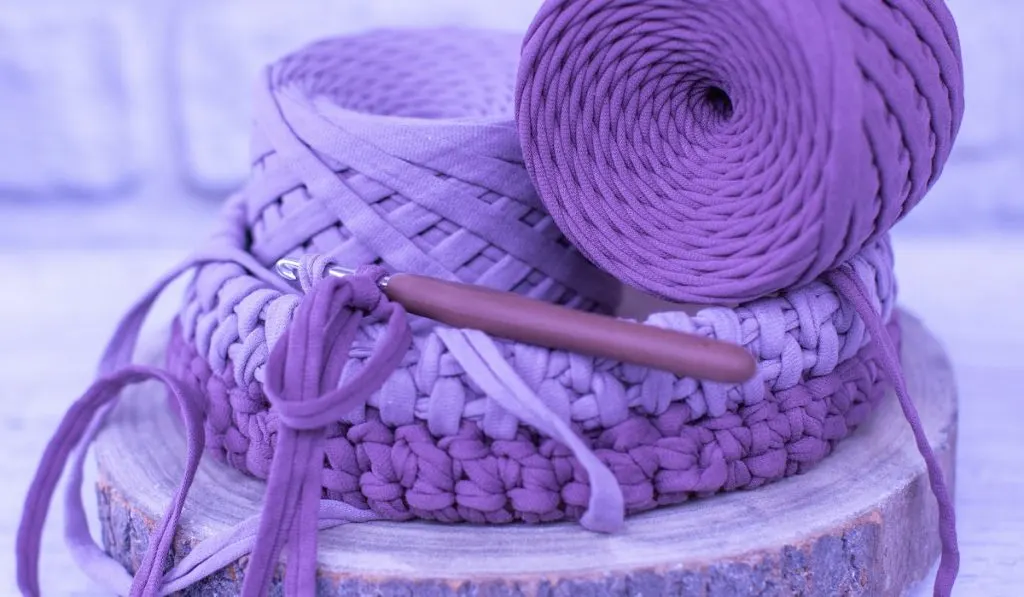
Crocheters all have their preference as to the size and shape of the hook they want to use when crocheting. For example, some prefer using aluminum crochet hooks because they are lightweight and smooth. Others like wooden crochet hooks, which they say give them a more ‘grippy’ feeling in their hands.
The material, size, and handle that make up the crochet hook vary, and each hook has its drawbacks, benefits for ease of use, comfort, and price.
Crochet Hook Types
Crochet hooks are the most important piece of equipment in your crochet kit. The right crochet hook can be the difference between a beautiful, even project and one that’s riddled with mistakes.
You will find crochet hooks in different sizes and materials. The size of the hook you choose will depend on the project at hand. If you are crocheting a sweater, for example, you will need to use a thicker hook than if you are working with thread or yarn and making flowers or scarves.
Crochet hooks come in six types:
- Steel
- Aluminum
- Wood
- Plastic
- Bamboo
- Ergonomic
Each material is ideal for certain projects and may feel better in your hand than the other type. While there are more expensive offerings on the market, these six types work well for new crocheters. Crochet hooks are available in various shapes and sizes.
Here is a list of types of crochet hooks along with the pros and cons:
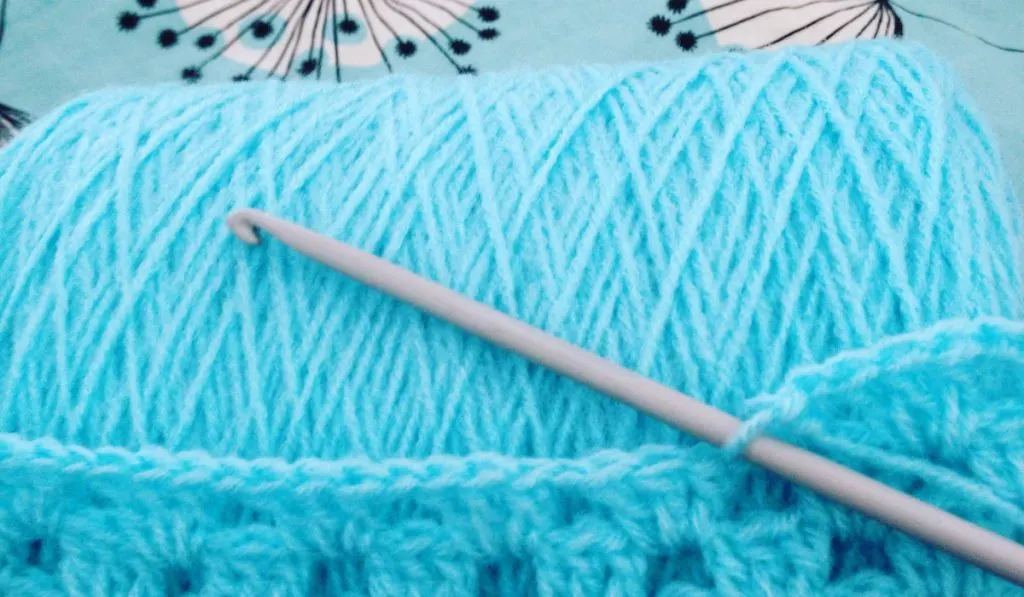
Plastic Crochet Hooks
Plastic hooks are a great choice if you are budget conscious. They are inexpensive, they don’t rust, and replacing them is economical. They are lighter and hollow, which makes them ideal for beginners. However, they only come in larger sizes.
Pros
- They are lightweight
- They are inexpensive
- Available in a wide range of sizes
Cons
- They make a squeaky sound which might be irritating.
- They get warm and may cause your hands to sweat
Wooden Crochet Hooks
Wooden crochet hooks are great for learners as they don’t slip, which means the hooks have a relatively good grip on the yarn you work with. However, advanced learners may find wooden hooks slow their speed.
You may need to wax them to keep them smooth and for durability.
Pros
- They are great for beginners who are figuring out how to crochet.
- They are lightweight
- Wooden crochet hooks are great for intricate crocheting
Cons
- They can break if you drop them on hard surfaces
- Smaller hook sizes may break
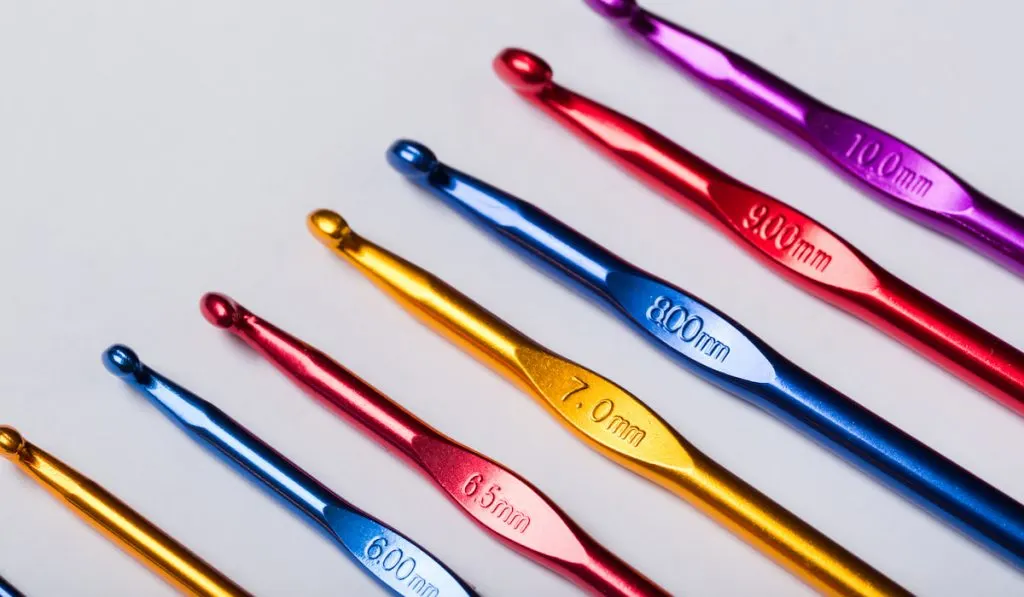
Steel Crochet Hooks
Steel hooks are usually made from stainless steel or nickel-plated aluminum material. They are good for lace-weight yarns. Their sizing is different compared to sizing from other hooks. This means that the smaller the number of the hook, the thicker the thread.
Pros
- They glide easily on loops which makes them great for advanced crocheters
- They are durable
- They are smooth
Cons
- They are heavier than wood, plastic, or bamboo
- They are cold, thus may cause joint pain and may be uncomfortable to people with arthritis
Aluminum Crochet Hooks
Aluminum crochet hooks are the most recognizable standard in the crocheting world, with the most common ones being Boye and Susan Bates. This is due to their reliability and long-wearing nature.
They are smooth, which makes them glide through loops effortlessly. You can crochet quickly with no danger of dropping stitches. If you have a yarn that sticks to other crochet hook material, this would be the perfect hook for that project.
Pros
- They are smooth
- They are great for those who want to work quickly
- They are durable
Cons
- Most aluminum hooks don’t have US sizing
Bamboo Crochet Hooks
Bamboo hooks are a great option for those who would like to choose eco-friendly hooks. They are made from bamboo, a renewable source considering the harvesting method and its growth rate.
Bamboo is strong yet flexible, thus difficult to break. They are lightweight and are ideal for beginners because they’re easier on your hands and wrists than other hook types.
Bamboo hooks also become smoother as you continue using them, which means they become faster as you perfect your crocheting skills.
Pros
- They are flexible
- They are smooth and sturdy
- Bamboo hooks don’t split yarns
- Ideal for beginners
- Good for anyone suffering from arthritis or carpal tunnel
- Bamboo hooks are quieter since they don’t make “clinking” sounds as you knit
Cons
- They are warm to the touch, which may cause your hands to sweat
- They may bend over time
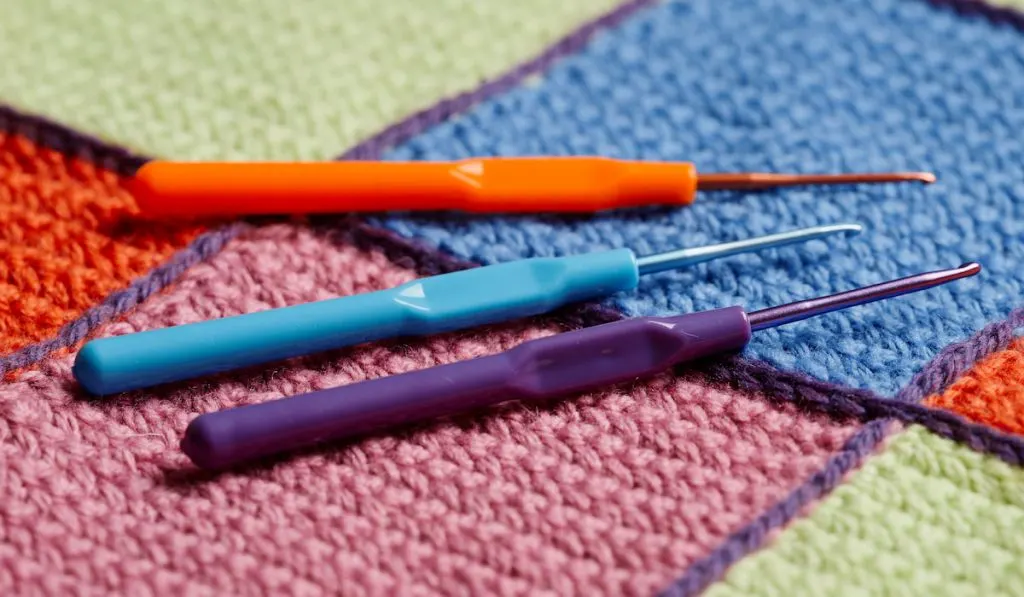
Ergonomic crochet hooks
Ergonomic crochet hooks have enlarged handles that make them comfortable for you to hold. Some have contoured shapes that help you to hold the hook comfortably. Their design helps alleviate pains that occur when you are crocheting.
When choosing an ergonomic hook, test various materials to find which one feels perfect before you purchase.
The pros and cons listed below are general because each ergonomic hook may vary slightly from the other.
Pros
- Bright colors
- Non-slip rubber handle will make it easier to hold
- Great for people who experience wrist pain while crocheting
Cons
- The design may make the loop to be smaller and closer, making it difficult to work with
Tapered vs. Inline hook
As you go through crochet hooks in a store, you will notice they differ in a way. You will see a tapered crochet hook and an inline crochet hook. Is there a difference between the two?
A tapered hook has a cylindrical body and a smooth cone-like throat. It is less deep and has a thumb rest that is nearer to the throat.
An inline crochet hook looks like it was cut from a cylinder with its throat looking more flat. The hook is deep and more pointed than the tapered style. The thumb rest appears to be higher up than the tapered one.
Inline hooks keep the yarn in the hook better than the tapered one.
Factors to Consider When Buying a Crochet Hook
Choosing the right crochet hook is one of a crocheter’s most important decisions. The size of a crochet hook determines how accurately you will be able to create detailed items and how enjoyable your crocheting experience will be.
Trying to decide which crochet hooks to buy can feel like trying to find a needle in a haystack. It’s especially tricky if you’re new to crochet since it’s hard to know what to look for in a crochet hook when you don’t know anything about them.
Beginners often encounter difficulties when choosing a crochet hook because they are not sure about sizing. There are some basic rules for choosing a crochet hook, which can help you solve this problem.
Choose Appropriate size
First, choose an appropriate size for your project. This is because the size of the hook affects the gauge of your project. Ensure that you choose one that will give your project the proper gauge.
Material
There are hooks available in different materials, such as metal, plastic, and wood. The crochet hook material you choose comes down to personal preference.
Some people like the smoothness of metal, while others prefer the comfort grips found on plastic hooks. If you are a beginner, try out each hook until you find one you can work comfortably with.
Point
The point is the tip of your crochet needle with a hook. Ensure that the hook is sharp enough to go through the loops but still blunt enough not to split the yarn or even stab your finger as you crochet.
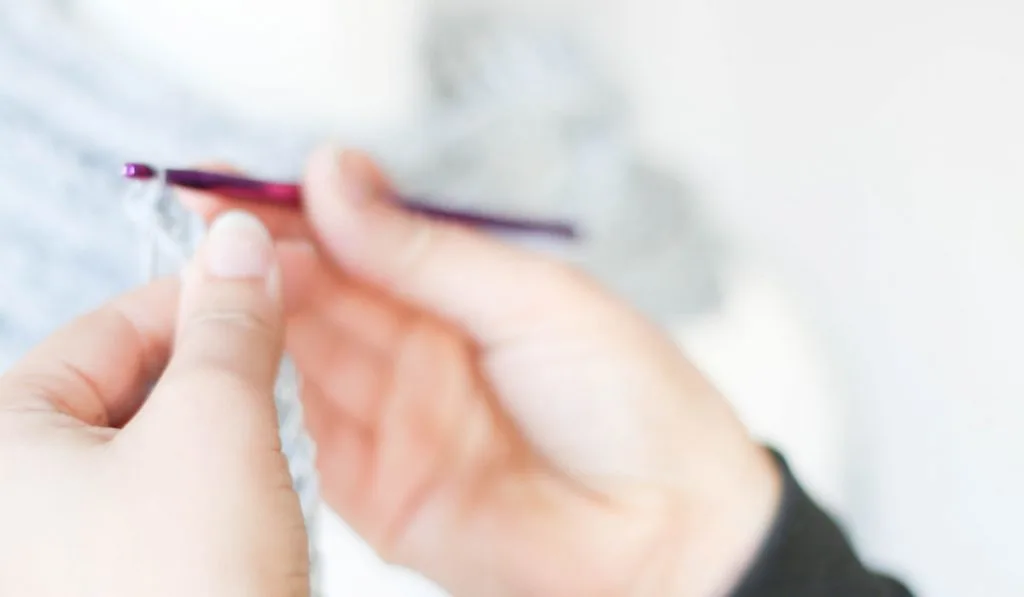
Availability
Another thing you should know about crochet hooks is that there are different types available on the market and that each has its unique benefits and drawbacks.
Gauge
Crochet hook sizing is not standardized and can vary from brand to brand. Be sure to check each manufacturer’s gauge when choosing a steel hook. Ensure that you check the manufacturer’s recommendations before choosing an appropriate hook size and type.
Comfort
You want to be sure that you purchase a crochet hook that is comfortable in your hand. Most crochet hooks today have an ergonomic design that helps with comfort.
Also, make sure that your hook is made from a material that allows for easy movement of yarn through each stitch and easy gliding from one stitch to another.
Efficiency
Whenever you are looking for a crochet hook, consider if the investment will be worth it in the long run. If you spend most of your time crocheting, consider a hook that works best for your crocheting style.
A crochet hook that is easy on your wrist and hand is a worthy investment that will save you the cost of physical therapy and you will have a great experience.
Frequently Asked Questions about Crochet Hooks
What’s the difference between a crochet hook and knitting needles?
Crochet hooks have a hook at the end of the needle to grab and pull the yarn through the loop while knitting needles are straight with a pointed end.
Why do some hooks have numbers on them?
The numbers will help you know the right hook for a particular yarn. Different hook numbers produce a different stitch. The loops will either be tight or loose depending on the hook number you choose.
If you are following a written pattern and desire to get the same end result then you have to use the right hook number. You will find the metric size above the hook while the number below the crochet hook is the US letter and number.
How long does it take someone to learn how to crochet?
Crocheting is an art that gets better with practice. The first project might seem difficult and most people take several attempts to produce a decent-looking product. However, don’t give up.
If you are having trouble with a stitch or pattern, try looking for a video tutorial that can walk you through it step by step. There are some great free videos on YouTube and other places on the Internet.
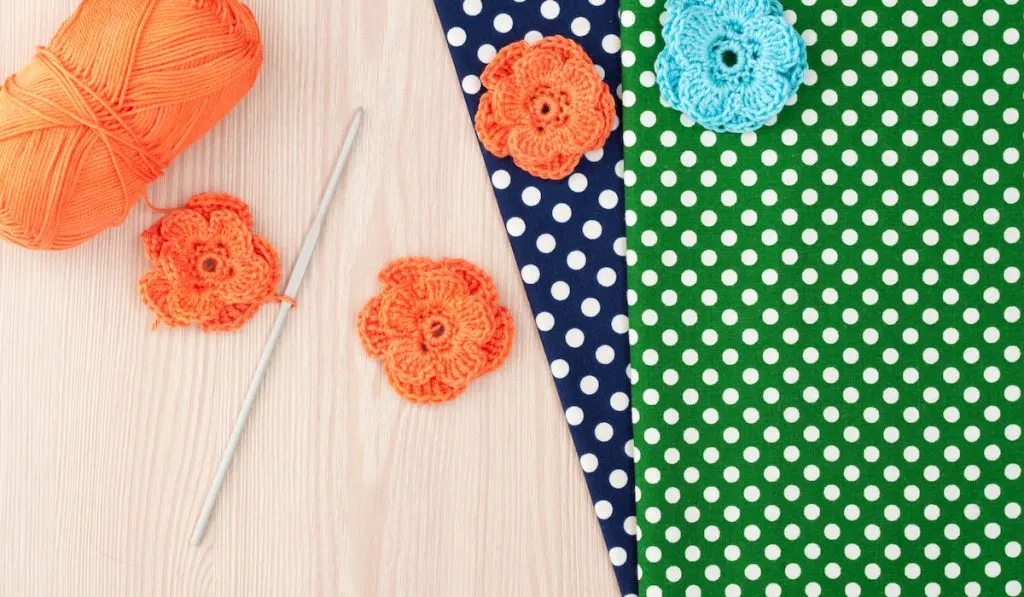
What’s the best hook size to use?
This depends on the yarn and pattern. In general, try to use a hook one or two sizes smaller than recommended for the yarn. This will result in a tight, dense fabric that will stand up better to laundering.
Final Thoughts
Crocheting is an enjoyable experience, especially if you have the right hook for your project. You can use plastic, wood, or bamboo hooks if you have arthritis or carpal tunnel conditions as they are very favorable.
Ensure that you take good care of your hooks so they don’t break if you are using a wooden crocheting hook.
Aluminum and steel crochet will last for a long time as they do not break. Keep your hooks in order by size so that when you’re looking for a particular yarn weight or pattern, everything will be right where it belongs.
For new crocheters, choosing a first or favorite crochet hook may be difficult when faced with numerous options. Whichever hook you choose, you can be sure that it will lead to an enjoyable outcome as long as you keep an open mind when taking that first step.
Resources:
- https://crocheteningles.com/what-materials-crochet-hooks-made-of-which-one-is-best-for-you/
- https://crochetpenguin.com/plastic-crochet-hooks/
- https://www.craftyarncouncil.com/standards/steel-crochet-hook-crochet-thread-sizes
- https://crochetpenguin.com/aluminum-crochet-hooks/
- https://www.fiberfluxblog.com/2014/03/inline-hooks-vs-tapered-hooks.html
